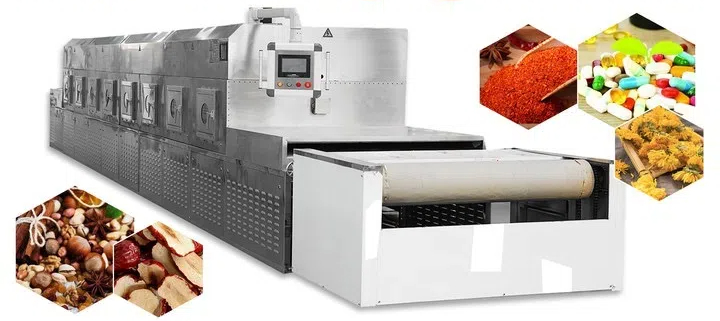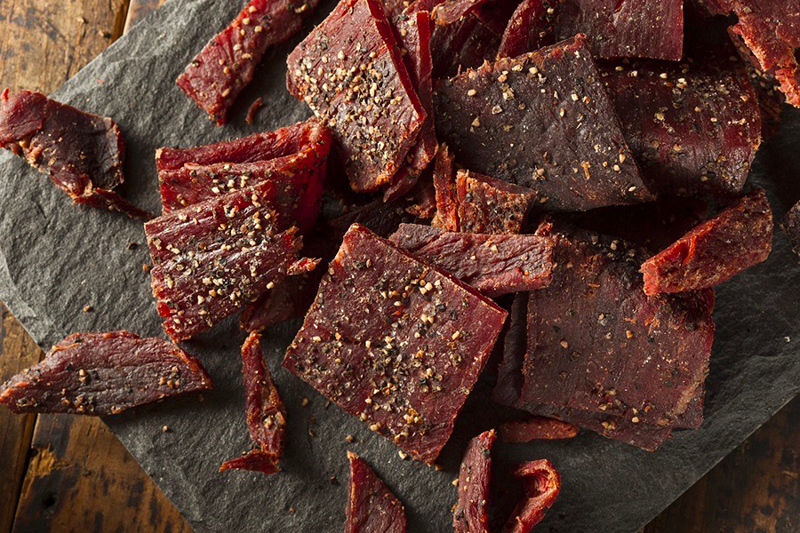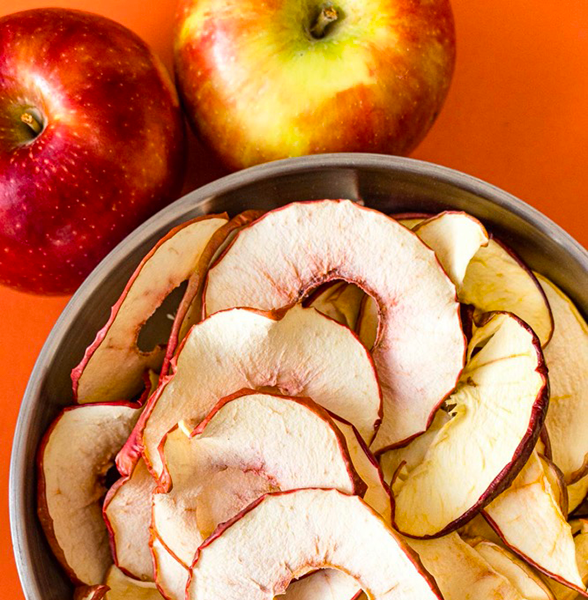
Content Menu
● Introduction to Compact Drying Equipment
>> Advantages of Compact Drying Equipment
>> Technical Innovations in Compact Food Dryers
>> Case Study: Compact Food Drying Solutions
>> Design Considerations for Compact Food Dryers
>> Market Trends and Future Outlook
>> Expanding Applications of Compact Drying Equipment
>> Integration with Other Technologies
>> Regulatory Compliance and Safety
>> Training and Support
● Conclusion
● FAQs
>> 1. What are the primary advantages of compact drying equipment?
>> 2. How does compact drying equipment contribute to sustainability?
>> 3. What technologies are used to improve drying efficiency in compact food dryers?
>> 4. Are compact dryers suitable for large-scale food production?
>> 5. How do compact dryers compare to traditional drying methods in terms of cost?
● Citations:
In the realm of food processing, drying equipment plays a crucial role in preserving food quality and extending shelf life. Among various designs, compact structures have gained popularity due to their efficiency, space-saving capabilities, and cost-effectiveness. This article explores the advantages of choosing compact drying equipment, particularly in the context of food drying machines.

Introduction to Compact Drying Equipment
Compact drying equipment is designed to optimize space while maintaining or enhancing drying performance. This is particularly beneficial in food processing, where facilities often face space constraints. By adopting a compact structure, manufacturers can increase production capacity without expanding their physical footprint.
Advantages of Compact Drying Equipment
1. Space Efficiency: Compact dryers are ideal for facilities with limited space. They allow for more efficient use of existing areas, enabling companies to increase production without needing additional real estate.
2. Energy Efficiency: Compact designs often consume less energy compared to larger models. This not only reduces operational costs but also contributes to a more sustainable operation by minimizing environmental impact.
3. Portability and Flexibility: Compact units are typically lightweight and easy to move, providing flexibility in production layouts and allowing for easy relocation if needed.
4. Improved Drying Performance: Compact designs can enhance drying efficiency by optimizing airflow and heat distribution, ensuring consistent drying results.
5. Cost-Effectiveness: While initial costs may vary, compact dryers often offer long-term savings through reduced energy consumption and lower maintenance needs.
Technical Innovations in Compact Food Dryers
Modern compact food dryers incorporate advanced technologies to improve drying efficiency and product quality. These include:
- Temperature Control Systems: Precise temperature control ensures that food is dried at optimal conditions, preserving nutritional value and texture.
- Airflow Management: Enhanced airflow systems help distribute heat evenly, reducing drying time and improving product consistency.
- Moisture Monitoring: Real-time moisture monitoring allows for precise control over the drying process, preventing over-drying and ensuring optimal product quality.
Case Study: Compact Food Drying Solutions
A notable example of compact drying technology is the use of freeze dryers in food preservation. Freeze drying involves freezing food and then reducing the surrounding pressure to allow frozen water to sublimate (change directly from solid to gas) without going through the liquid phase. This method preserves the food's nutritional content and texture better than other drying methods.

Design Considerations for Compact Food Dryers
When designing compact food dryers, several factors must be considered:
- Material Selection: Choosing materials that are durable, easy to clean, and resistant to corrosion is crucial for maintaining hygiene and extending equipment lifespan.
- Automation and Control: Implementing automated systems can streamline the drying process, reduce labor costs, and enhance product consistency.
- Energy Efficiency Features: Incorporating features like insulation and optimized heating elements can significantly reduce energy consumption.
Market Trends and Future Outlook
The demand for compact drying equipment is expected to grow as industries seek more efficient and sustainable solutions. Advances in technology will continue to play a key role in enhancing the performance and appeal of compact dryers.
Expanding Applications of Compact Drying Equipment
Beyond traditional food drying, compact equipment is being explored in various niche applications:
- Herbal Drying: Compact dryers are used to preserve herbs, maintaining their potency and aroma. This is particularly important in the pharmaceutical and culinary industries.
- Spice Preservation: Compact dryers help preserve spices by removing moisture, which prevents spoilage and maintains flavor.
- Pet Food Production: Compact dryers are used in pet food manufacturing to dry ingredients efficiently, ensuring nutritional quality and safety.
Integration with Other Technologies
Compact drying equipment can be integrated with other technologies to enhance overall efficiency:
- Vacuum Technology: Combining compact dryers with vacuum systems can further improve drying efficiency by reducing the boiling point of water, which speeds up the drying process.
- Solar Drying: In some regions, compact dryers can be paired with solar drying systems to utilize renewable energy sources, reducing operational costs and environmental impact.
Regulatory Compliance and Safety
Compact dryers must comply with food safety regulations to ensure the quality and safety of dried products. This includes adherence to standards for material selection, cleaning protocols, and operational practices.
Training and Support
Manufacturers often provide training and support to ensure that users can optimize the performance of compact drying equipment. This includes guidance on maintenance, troubleshooting, and best practices for operation.
Conclusion
Choosing a compact structure in drying equipment offers numerous benefits, from space and energy efficiency to improved drying performance and cost-effectiveness. As technology continues to evolve, compact dryers are poised to become an essential component in modern food processing facilities. Their versatility, efficiency, and sustainability make them a valuable asset for businesses seeking to enhance their operations.

FAQs
1. What are the primary advantages of compact drying equipment?
Compact drying equipment offers several key benefits, including space efficiency, energy savings, portability, and enhanced drying performance. These advantages make compact dryers ideal for facilities with limited space or those seeking to reduce operational costs.
2. How does compact drying equipment contribute to sustainability?
Compact dryers contribute to sustainability by consuming less energy compared to larger models, which reduces environmental impact. Additionally, their efficient design helps minimize waste and preserve food quality, aligning with sustainable food processing practices.
3. What technologies are used to improve drying efficiency in compact food dryers?
Technologies such as advanced temperature control systems, optimized airflow management, and real-time moisture monitoring are used to enhance drying efficiency in compact food dryers. These technologies ensure consistent drying results and preserve food quality.
4. Are compact dryers suitable for large-scale food production?
While compact dryers are ideal for smaller batches, they can be used in large-scale production by deploying multiple units. This approach allows for flexibility and scalability while maintaining the benefits of compact designs.
5. How do compact dryers compare to traditional drying methods in terms of cost?
Compact dryers often have a higher initial cost but offer long-term savings through reduced energy consumption and lower maintenance needs. Over time, these savings can offset the initial investment, making compact dryers a cost-effective choice for many operations.
Citations:
[1] https://www.valmet.com/insights/articles/board-and-paper/closer-is-better--the-valmet-compact-dryer-concept/
[2] https://oceanside-appliancerepair.com/blog/compact-dryers-advantages-and-limitations/
[3] https://harvestright.com/faqs/
[4] https://patents.google.com/patent/CN110207480A/zh
[5] https://www.dalgakiran.com/en/blog/advantages-of-compact-designs-in-air-compressors/
[6] https://www.libertyhomeguard.com/compact-washer-dryer-units/
[7] https://www.gettystewart.com/dehydrating-equipment-what-you-need-to-get-started/
[8] https://patents.google.com/patent/CN109252340A/zh











